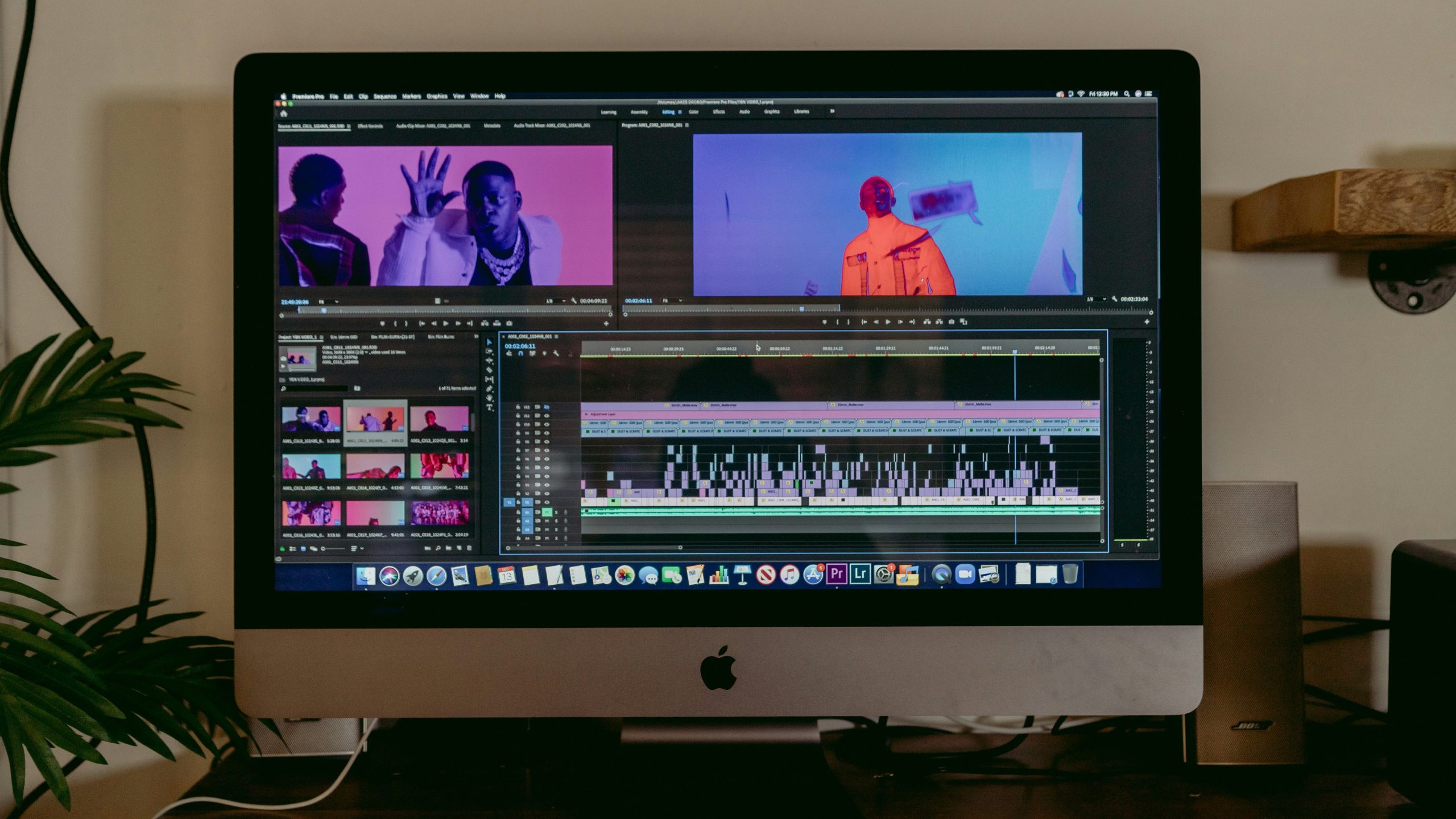Video content has long dominated marketing but how damaging is it to the environment? From pre-production planning to final streaming, there’s lots of ways to make your video production process more sustainable. Starting from the beginning with scripting all the way to final streaming, here’s some of the ways that we ensure a greener workflow while maintaining high-quality content.

Pre-Production: Less Is More
It starts from the very beginning with a well-planned script and storyboard. The more precise you can be with your planning, the more confident you’ll feel and the less unnecessary footage you’ll shoot; reducing energy consumption, storage, and cloud transfer emissions. And if you use digital collaboration tools to streamline approvals, you reduce the need for travel and print outs.
A helpful tip – never skip on getting approval from all your stakeholders, re-shoots cost money, time and generate digital waste. Every extra file stored in the cloud has an environmental footprint, so efficiency in pre-production pays off in sustainability.
Production: Smart Filming Choices
Do you really need to film in 4K or 6K for social-first videos? If the content is destined for mobile screens on Instagram, TikTok, or LinkedIn, lower resolutions may be sufficient. Shooting in 1080p instead of 4K drastically reduces file sizes, saving storage and cloud processing energy.
Lower resolutions mean smaller files, faster edits, and reduced energy usage in post-production and streaming.
Another important consideration is selecting a local crew and location. Hiring local talent and minimising travel for cast and crew reduces carbon emissions. Using energy-efficient lighting, reusable sets, and eco-friendly catering are additional ways to lower your production’s impact.
If you are filming overseas, we would recommend using a trusted local crew rather than flying out people and equipment.
Be cautious on your choice of location and crew. We prioritise local production teams to cut down on travel-related carbon emissions. Using LED lighting, energy-efficient equipment, and reusing set materials further reduces our footprint. Our B Corp certification ensures that we work with ethical suppliers and production partners who share our commitment to sustainability and fair working conditions.
Post-Production: The cost to planet and people

Rendering video is one of the most energy-intensive processes in production. Every transition, effect, and final export requires immense computing power, often run on high-performance servers in data centres that consume vast amounts of electricity. These data centres rely on cooling systems to prevent overheating, adding to their overall energy footprint.
To put it in perspective, rendering a complex CGI sequence or multiple high-resolution versions of a video can use as much energy as running a household for several days. Compared to other environmental impacts in production, such as travel or lighting, rendering is often overlooked but can be just as significant.
By keeping editing workflows efficient, limiting unnecessary revisions, and avoiding excessive rendering, you can significantly reduce the computing power required. Choosing energy-efficient software and cloud services powered by renewable energy also helps lower the environmental impact of post-production.
When it comes to creative talent, hiring local editors and animators supports the local economy and reduces the need for large digital file transfers across servers, further cutting down on energy usage. It’s also more fun! When directors and editors can sit side by side you get an energised team and a more polished final edit.
We choose to work with local talent in post-production, not only for the environmental benefits but also to support the local economy. By collaborating with editors, animators, and sound designers within our community, we minimise the environmental impact of transferring large project files across servers, aligning with our B Corp pledge to support local communities and reduce digital waste.
The Environmental Cost of AI in Scripting
AI tools are revolutionising scripting, making it faster and more efficient. However, they come at an environmental cost. Training and running AI models require immense computing power, which increases carbon emissions. While AI can optimize workflows, it’s essential to use it mindfully balancing its efficiency benefits with the environmental impact
Sustainable Hosting and Streaming
Once your video is ready for distribution, consider the environmental impact of hosting and streaming. Social media platforms store and stream millions of videos daily, consuming vast amounts of energy. To reduce your digital footprint:
- Optimise video sizes and resolutions for each platform.
- Use efficient encoding methods to reduce file sizes.
- Remove outdated or underperforming content to free up server space.
- Choose green hosting platforms when possible.
Conclusion: Producing Green in a High-Volume World

With the demand for video content growing, sustainability must be a priority. By planning efficiently, making smart filming choices, streamlining post-production, and optimizing distribution, you can create impactful content while minimising your carbon footprint. Small, intentional changes at every stage of production make a big difference in reducing environmental impact, ensuring a more sustainable future for video marketing
At Skylark Media, sustainability isn’t just an add-on, it’s embedded in our DNA. As a certified B Corp, we are committed to balancing profit with purpose, ensuring that our video production practices prioritise people and the planet.
